


Don't let my voice fool you
Animation (05:21)
MA Thesis Project
KADK -- Royal Danish Academy
2020
Sound design by DebFoam
Don't let my voice fool you is an animation that tackles the issue of the feminization of voice technology. It was developed as my MA Thesis project at KADK, and is the result of a deeper research into the subject explored during the self-initiated project Talk to me, you’ll understand.
The video wants to shed light on how stereotypical associations of women with assistive roles, and of men with authoritative ones, have been translated into our technologies over history. It also aims at opening a discussion on the implication that the gendering of voice technology has always had and will continue to have on our society, reflecting on how values of inclusiveness and equality should be implemented in the design process.
Research and Concept Development
Legacy of gendered voice technology
The history of artificial intelligence and speech reproduction is filled with legends and examples of anthropomorphic talking machines. As Naas & Brave state, “the more feminine-sounding the voice is [...], the more female gender stereotypes will be attributed to and expected from it, and conversely, the more masculine-sounding the voice is, the more male stereotypes will be attributed to and expected from it.” (2005).
In my research, I identified some key examples in the history of artificial intelligence and speech reproduction, in which male/female genders were assigned to different machines (assigned: either by their machine bodies, by their associated persona or by the voices heard from them), perpetuating various gender stereotypes.
See the images below for more details (click on them to read a brief description of each example).
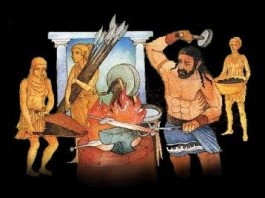
C8TH B.C. - golden maidens
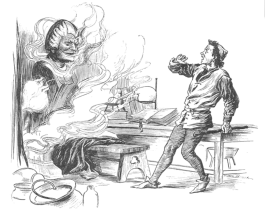
5TH—15TH A.D. - brazen heads
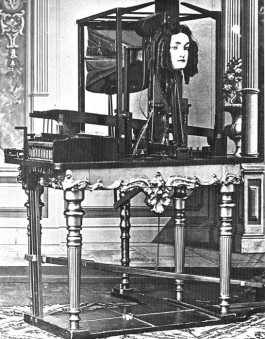
1845 - the euphonia
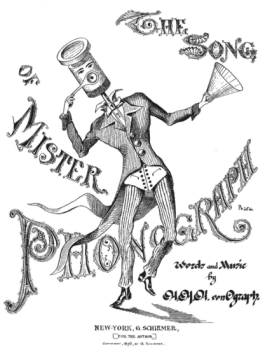
1877 - the phonograph
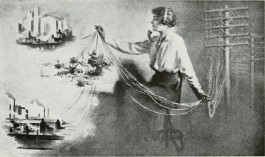
1878 - the telephone operator
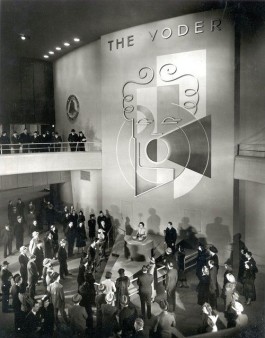
1939 - the voder
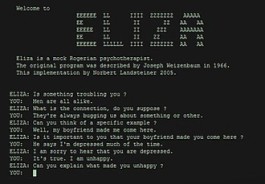
1964 - eliza
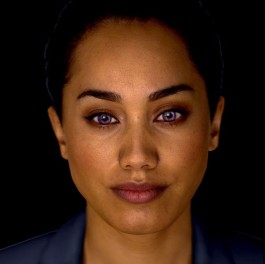
2017 - A.V.A.
Script Writing, Storyboarding and Design
Historical examples of gendered talking machines as characters of the animation
The found similarities between ancient legends of automatons magically coming to life, early attempts of anthropomorphised talking machines and today’s voice assistants represented a chance to look at the gendering of voice technology in a wider historical context.
These historical examples of gendered talking machines became the protagonists of the animation: they are portrayed as living ancestors of our voice technologies, interacting with a generic female voice assistant. In the same way as Siri, Alexa, Google Assistant and Cortana learn by interacting with their users, this voice assistant acquires knowledge and consciousness from the interaction with her ancestors. The aim is to unveil similarities between the parts and initiate a critical conversation on these objects’ gendering.
The visuals are hand rendered digital illustrations, characterized by imprecise strokes and fills, and a rich color palette. This stylistic choice was dictated by wanting to create a visual language that distances itself from the kind of imagery usually associated with AI technology (slick 3D visuals and cold tones), and connects with the human-like characteristics of these machines. This style emphasizes the characters’ uncanniness, placing them in the ambiguous realm of something that is not fully human, nor fully machine.
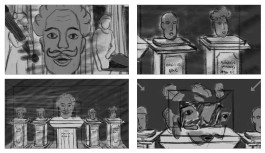
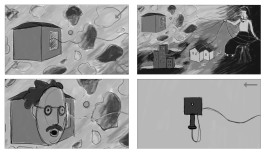

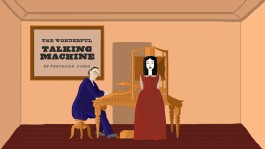
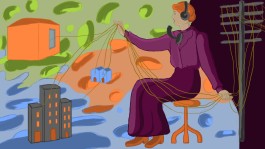

Animation
Using AI for frame-by-frame animation
In animating the characters’ talking heads, the intention was to translate the same “human uncanniness” of the still frames into their motion. To do so, I experimented with Eb-Synth, a new software that uses AI technology to stylise a video sequence using only one (or a few) illustrated frames as a reference.
By using my own facial movements as source video material and only one painted reference frame, I managed to obtain smooth frame-by-frame illustrated sequences of different talking machines.
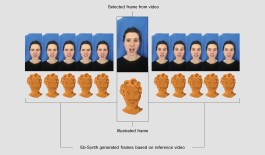
For more information about this project, please contact me.
Don't let my voice fool you
Animation (05:21)
MA Thesis Project
KADK -- Royal Danish Academy
2020
Sound design by DebFoam
Don't let my voice fool you is an animation that tackles the issue of the feminization of voice technology. It was developed as my MA Thesis project at KADK, and is the result of a deeper research into the subject explored during the self-initiated project Talk to me, you’ll understand.
The video wants to shed light on how stereotypical associations of women with assistive roles, and of men with authoritative ones, have been translated into our technologies over history. It also aims at opening a discussion on the implication that the gendering of voice technology has always had and will continue to have on our society, reflecting on how values of inclusiveness and equality should be implemented in the design process.
Research and Concept Development
Legacy of gendered voice technology
The history of artificial intelligence and speech reproduction is filled with legends and examples of anthropomorphic talking machines. As Naas & Brave state, “the more feminine-sounding the voice is [...], the more female gender stereotypes will be attributed to and expected from it, and conversely, the more masculine-sounding the voice is, the more male stereotypes will be attributed to and expected from it.” (2005).
In my research, I identified some key examples in the history of artificial intelligence and speech reproduction, in which male/female genders were assigned to different machines (assigned: either by their machine bodies, by their associated persona or by the voices heard from them), perpetuating various gender stereotypes.
See the images below for more details (click on them to read a brief description of each example).

C8TH B.C. - golden maidens

5TH—15TH A.D. - brazen heads

1845 - the euphonia

1877 - the phonograph

1878 - the telephone operator

1939 - the voder

1964 - eliza

2017 - A.V.A.
Script Writing, Storyboarding and Design
Historical examples of gendered talking machines as characters of the animation
The found similarities between ancient legends of automatons magically coming to life, early attempts of anthropomorphised talking machines and today’s voice assistants represented a chance to look at the gendering of voice technology in a wider historical context.
These historical examples of gendered talking machines became the protagonists of the animation: they are portrayed as living ancestors of our voice technologies, interacting with a generic female voice assistant. In the same way as Siri, Alexa, Google Assistant and Cortana learn by interacting with their users, this voice assistant acquires knowledge and consciousness from the interaction with her ancestors. The aim is to unveil similarities between the parts and initiate a critical conversation on these objects’ gendering.
The visuals are hand rendered digital illustrations, characterized by imprecise strokes and fills, and a rich color palette. This stylistic choice was dictated by wanting to create a visual language that distances itself from the kind of imagery usually associated with AI technology (slick 3D visuals and cold tones), and connects with the human-like characteristics of these machines. This style emphasizes the characters’ uncanniness, placing them in the ambiguous realm of something that is not fully human, nor fully machine.






Animation
Using AI for frame-by-frame animation
In animating the characters’ talking heads, the intention was to translate the same “human uncanniness” of the still frames into their motion. To do so, I experimented with Eb-Synth, a new software that uses AI technology to stylise a video sequence using only one (or a few) illustrated frames as a reference.
By using my own facial movements as source video material and only one painted reference frame, I managed to obtain smooth frame-by-frame illustrated sequences of different talking machines.

For more information about this project, please contact me.